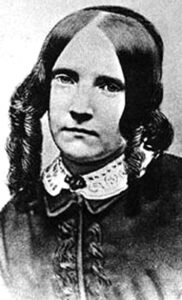THE OTHER FENIMORE COOPER
By JIM KEVLIN • Special to www.AllOTSEGO.com

After reading “Rural Hours,” Charles Darwin, of all people, mentioned Susan Fenimore Cooper in a letter to Asa Gray, perhaps the most important American botanist of the 19th Century.
Struck by her understanding of the “battle” between Old and New World weeds, he asked, “Who is she?”
Nowadays, we know the “weeds” she was writing about were “invasive species,” a burning environ-mental issue in Glimmerglass’ environs even today, 125 years after James Fenimore Cooper’s daughter’s death, as we worry about the zebra mussel, the water chestnut and, heavens, the European frog bit.
If Charles Darwin knew her, “How do I know about Henry David Thoreau and not about this woman?” Professor Johnson asked herself when she first happened on “Rural Hours.” It was in the 1990s. She was a graduate student immersed in the Transcendentalists while seeking her masters and doctorate at Claremont Graduate University in California.
With a planned focus on Shakespeare or the British Modernists, “I was taken by surprise when I got scooped up in environmental writing, about the human relationship to the natural world,” she said.
You have reached your limit of 3 free articles
To Continue Reading
Our hard-copy and online publications cover the news of Otsego County by putting the community back into the newspaper. We are funded entirely by advertising and subscriptions. With your support, we continue to offer local, independent reporting that is not influenced by commercial or political ties.

